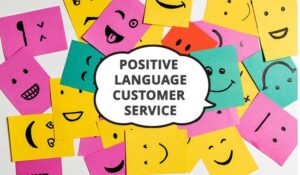Here are ten examples of conversations to have with your team that can help to improve contact centre performance.
But before we get into these key discussions, it’s important to highlight that they shouldn’t just be held in a formal setting. Informal conversations have just as much, if not more, value. People pay attention to what you do, not just what you say.
Schedule Time for Informal Conversations
It is vital for the contact centre manager to schedule time in their daily routine for informal discussions, not only with team leaders but with advisors too, according to Peter Massey, the Managing Director of Budd.
Peter says: “There are three reasons for doing this. Firstly, to be seen to be invested in their roles, showing that you care by listening to them and discussing their needs.”
“Secondly, if you’re scheduling time, you are more likely to actually go ahead and have these good conversations. Without having the time scheduled to do this, you’re much less likely to free up time from all your other managerial duties.”
“The third reason is to obtain a good sense of what’s important – it will help you add context to the statistics that come across your desk each day.”

Scheduling time for informal conversations will help you add context to the statistics that come across your desk every day.
“Some people call it managing by walking about. Prioritising time for people and for knowing what’s really happening makes your decision-making fast and easy.”
So, without further ado, here are ten great conversations to have with your team, in formal and informal settings.
1. Development Conversations
Career progression conversations are important in any profession, but even more so in the contact centre, with its notoriously high attrition rates and flat structures. These conversations need to be regular, so that we keep feeding advisors with an internal motivation to develop their skills.
Therefore these conversations need to be both formal and informal, as Peter advises: “Focus on their strengths and the need to develop those skills, instead of just business needs.”
“There are limited promotion opportunities in the contact centre, so talk to the team about how they can develop their strengths that are valuable to other parts of the organisation.”
Talk to the team about how they can develop their strengths that are valuable to other parts of the organisation.
“However, you can only have good development conversations with the team if you know your people. This is why it’s important to have these impromptu conversations with advisors and, over time, you’ll get a good understanding of their strengths and weaknesses.”
2. Performance Reviews
How often you have one-to-one performance reviews with advisors will likely already be part of your DNA, but consistent individual feedback is key to improving performance.
Peter says: “A performance review doesn’t need to be a scheduled one-to-one away from the rest of the team. Informal recognition of good performance is just as important.”
A performance review doesn’t need to be a scheduled one-to-one away from the rest of the team. Informal recognition of good performance is just as important.
“In your formal review, ask the advisor to think of three things that they are doing well and have one idea of your own to discuss. If they don’t mention your idea, you have four strengths to build on. If they do, focus in on that and what you can do to amplify that strength.”
“Also, give quick team performance reviews and show recognition of their combined effort to help improve the team focus. Team huddles are a good way to do this.”
3. Health and Well-Being Conversations
Organisations are paying more and more attention to how their team feels, realising that it’s no longer enough to just have an Employer Mental Health (EMH) policy tucked away and out of sight.
To help lower absence and, more importantly, ensure that your employees can enjoy their work, talking about advisor well-being is a first step in combating any underlying mental health problems.

Manage expectations so that advisors know all the options that are available to them when they’re looking for support.
Peter says: “You need to manage expectations, so that advisors know all the options that are available to them when they’re looking for support.”
In terms of the conversations, when you have one-to-ones, it is good practice to make it the norm to discuss how they feel, so advisors know that this is an opportunity to raise any well-being questions.
Peter continues: “Remember to follow up an absence or sick leave and make this conversation a routine. But be careful not to push people too far, as you do not want them to come into work when they should be at home (‘presenteeism’ ).”
4. Culture Conversations
If you don’t give advisors a say in any changes that impact them, you miss a key engagement opportunity. Conversations about culture improvement are key if you wish to engage the team with your goals and ensure ideas are greeted warmly.
Peter says: “Consultation for change is important and having a cascade mechanism that helps you pass messages on to advisors and them to you is really good practice.”

Peter Massey
“Cascade mechanisms are important so that advisors can make their opinions heard at a management level and the changes that management want to make can be implemented at the advisor level.”
“Yet a problem many contact centres face is a cynicism to change. You have to form habits, to ensure the change is being upheld, and these need to be reinforced by the leadership habits that you see around you.”
5. Voice of the Customer Conversations
It is advisors who listen to customers all day, becoming increasingly aware of their likes and dislikes. To not use that knowledge and to not spread that to other areas of the business can be a real waste.
As Peter says: “Too often contact centres gather data for scores and not actions. Taking the time to listen to what customers are saying requires no more effort, but it makes a whole lot of difference. Talking to the team is one way to get that started.”
Open feedback in focus groups can help, but you need to ensure that everyone has a say, not just those who shout the loudest.
“Open feedback in focus groups can help, but you need to ensure that everyone has a say, not just those who shout the loudest.”
One key suggestion for holding advisor focus groups is to ask advisors to come with solutions to specific questions, not just problems, so the team are better invested in the change when it comes.
6. Leadership Conversations
There needs to be a conscious collective effort for an organisation to achieve its goals and strong leadership conversations are central to that.
Peter says: “We need everyone to be aware of the direction that our organisation wants to move in and to think about how everyone can relate to that.”
Discuss the changes that you need to make on the contact centre floor to align yourself with the wider business goals.
Some contact centres will play a video from the CEO every few months that reminds everyone of the organisational goals, but that won’t be enough to encourage a behavioural change. As Peter says, we need to make our goals relatable to everyone.
So, talk to your team leaders, and maybe even a couple of advisors for good measure, to discuss the changes that you need to make on the contact centre floor to align yourself with the wider business goals.
7. Team Conversations
Team conversations follow on from leadership conversations, so you can transfer the ideas discussed onto the contact centre floor and bring them into reality. We need to create conversations that make the overall goals of the contact centre attainable to advisors.
Through these conversations, we can develop changes to behaviour and routines that will generate the all-important cohesive effort.

Team conversations give the direction and make advisors aware of how they can contribute to the direction.
As Peter says: “Leadership discussions make everyone aware of the direction of the organisation and team conversations give the direction and make advisors aware of how they can contribute to the direction.”
8. Trigger Conversations
Leaders can coach advisors to have trigger conversations with themselves before they have a conversation with a customer. In a trigger conversation, a person reminds themselves of their purpose. For example; ‘What can I do to make this person happier?” While this may sound a little obvious, it helps guard against the perils of prescriptive training.
Peter explains: “Prescriptive training is when advisors are taught to do certain things regardless of what the individual customer needs. There is no attention to the individual customer’s needs and the best solution for them.”
Prescriptive training is when advisors are taught to do certain things regardless of what the individual customer needs.
“Sometimes, advisors are trained to approach a call as a task to do, as a problem that they have to solve. It’s easy to forget the human element.”
“But a trigger conversation helps to put focus back onto the other person; ‘What you want, not what I need to do’. The customer will feel that the emotional element of the call is different.”
9. The Coaching Conversation
It is not enough to send advisors a quality score and expect them to improve it. A conversation is needed to explain why the score is how it is and to take learnings from that.
So, a great activity to run is peer-to-peer assessments, where the advisor and the coach/team leader listens back to a call, scoring it separately. Then both parties have a conversation about why they scored the call the way that they did.
Even doing this between two advisors helps to create peer-to-peer discussion about how to do better for the customer and to share praise on what they are already doing well.
10. Learning Conversations
At the end of any call, having an informal discussion with the advisor about what they have learned from that call can really aid their development, according to Peter Massey.
Keep the team engaged with the idea that every contact is a learning opportunity and that will help you to build a culture of continuous learning.
Peter says: “By asking advisors simple questions like ‘What did the customer like about that call?’, ‘What would you do differently another time?’, ‘How would Amy have answered that question?’, you keep them engaged with the idea that every contact is a learning opportunity and that will help you to build a culture of continuous learning.”
If an advisor believes in coaching questions they can ask themselves at any time they will be constantly taking lessons from each contact, which will help to boost their development and performance.
In Summary
Each of these conversations may have a positive impact on the most important interaction type within an organisation: the customer–advisor conversation.
Remember, all customer experience comes down to the perceived quality of a conversation between a customer and the company – usually in the form of one person, the one they are talking to. Having time and techniques to talk to customers is the essence of customer experience.
Once you start having these ten conversations within your contact centres, you may be surprised at how they might influence the customer experience.
Here’s a quick reminder of each these ten key conversation types:
| Ten Great Contact Centre Conversations | |
|---|---|
| 1. Development Conversations | 2. Performance Reviews |
| 3. Health and Well-Being Conversations | 4. Culture Conversations |
| 5. Voice of the Customer Conversations | 6. Leadership Conversations |
| 7. Team Conversations | 8. Trigger Conversations |
| 9. The Coaching Conversation | 10. Learning Conversations |
For more on creating a better contact centre community, read our articles:
Author: Robyn Coppell
Published On: 6th Feb 2019 - Last modified: 12th Nov 2024
Read more about - Hints and Tips, Editor's Picks, Empowering Agents, Performance Management, Peter Massey, Team Management




















